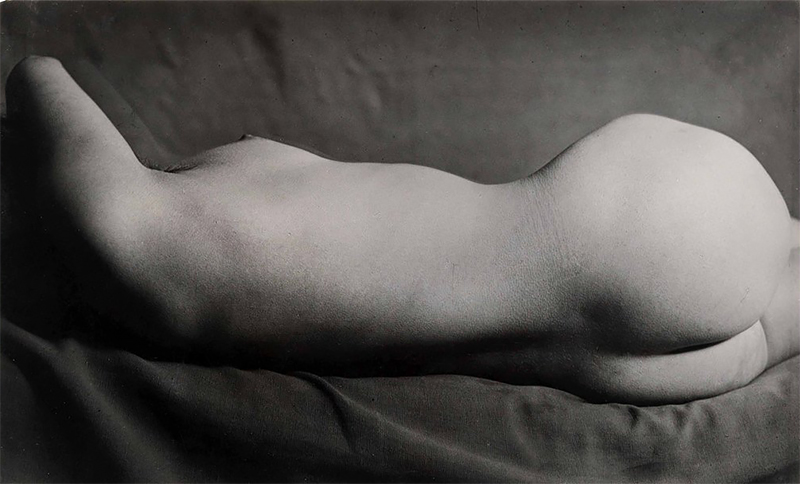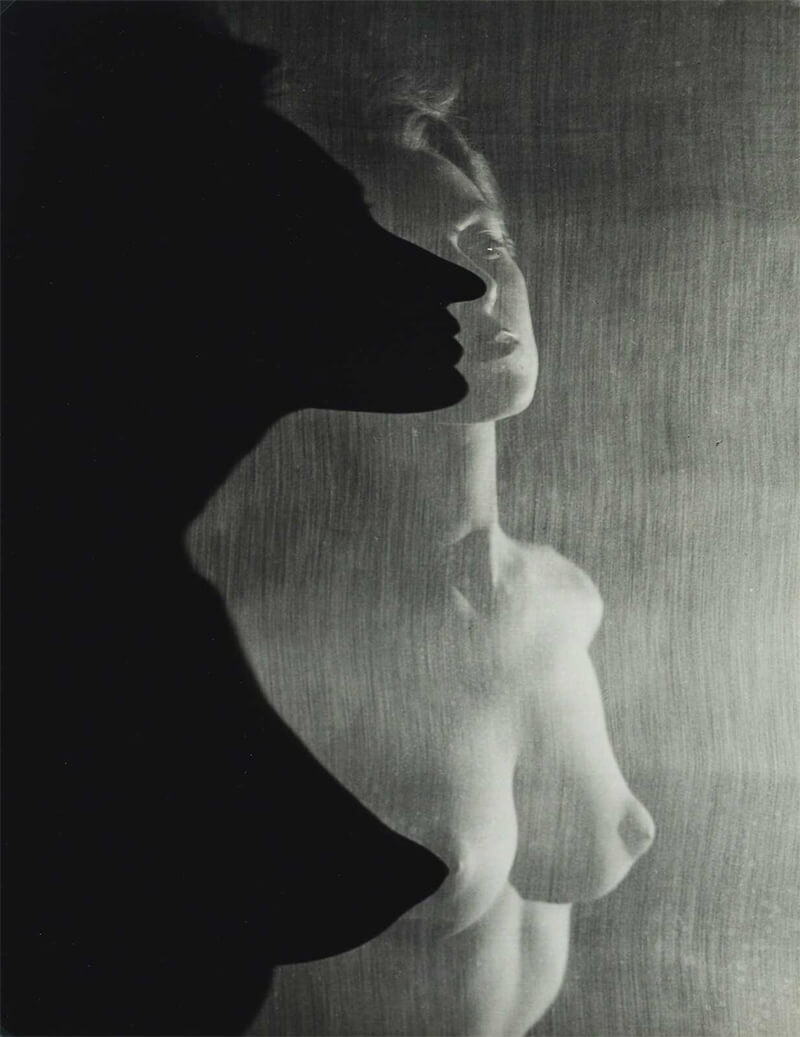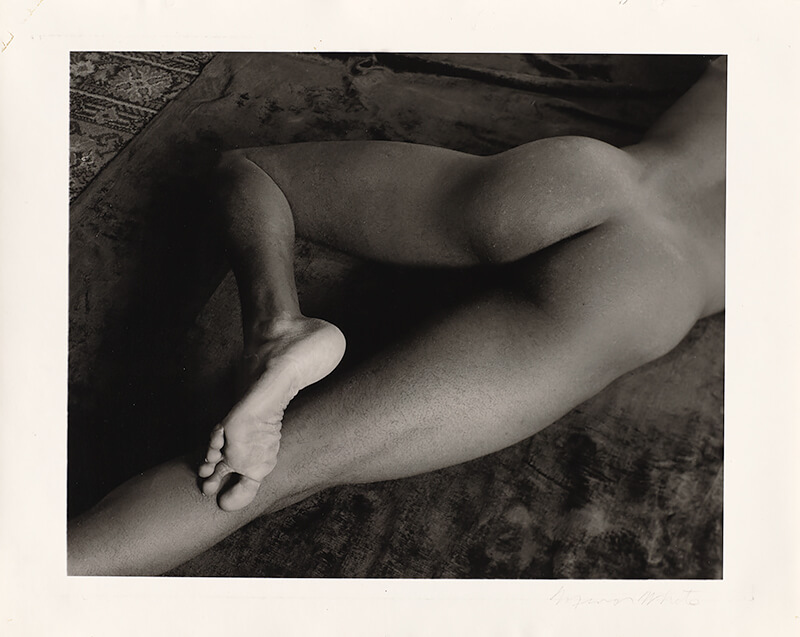Photography has had a profound impact on the evolution of the perception of the body in our visual history. It has fully contributed to the exploration of human anatomy and morphology, as well as to our collective erotic imagination. But what happened after 'The Golden Age of photography' was suddenly stopped by WWII?
The years leading up to and following the war, saw the greatest migration of artists and intellectuals ever, as people fled Fascist alliances. Almost overnight, photographers fled the cultural capitals of Europe and found shelter and work mostly in the US and Great Britain. Photography flourished as a result of this migration of talent.
Photography grew in influence and power. It helped transform modern society into a predominantly visual culture, in which information and news is led by photographers rather than words. During the war, photography became a tool to tell stories (photojournalism) or influence (propaganda) what was happening in a world turned upside down. The rapidly changing world of the photojournalist invaded photography from the late 1930s through the rest of the century. Photographers brought the realities of war into people's homes through magazines and newspapers. Editors held enormous power and photographers became heroes who took the pulse of the times.
Historical circumstances and technical improvements set the stage for the success of photojournalism but also for fashion photography. In the late 40s and 50s the world economy was expanding but not fast enough to keep women in the workplace and absorb servicemen returning from the front. Women were encouraged to return home and stimulate the economy by purchasing consumer goods. The 'New Look' that invaded the fashion scene in the late 40s celebrated ultra-femininity and opulence in women's fashion. After years of military and civilian uniforms, the image of women became more desirable. Fashion photography played a major role in the development of illustrated magazines that became its promotional vehicle like
Vogue or
Harper's Bazar.
Following in the footsteps of
Steichen when he was a photographer for Vanity Fair and Vogue before the war, Vogue and Harper's Bazar used the finest photographers like
George Hoyningen-Huene,
Horst P. Horst,
Louise Dahl-Wolfe,
Cecil Beaton,
Erwin Blumenfeld,
Norman Parkinson,
Richard Avedon,
Irving Penn... to obtain the most appealing images. The best circulation figures determined the advertising earnings and the latest 'Haute Couture' exclusives.
These acclaimed photographers dominated the world of fashion photography by creating fantasy bodies.
At the same time, the high demand for new type of images, allowed these artists to pursue their own work without compromising their artistic integrity.
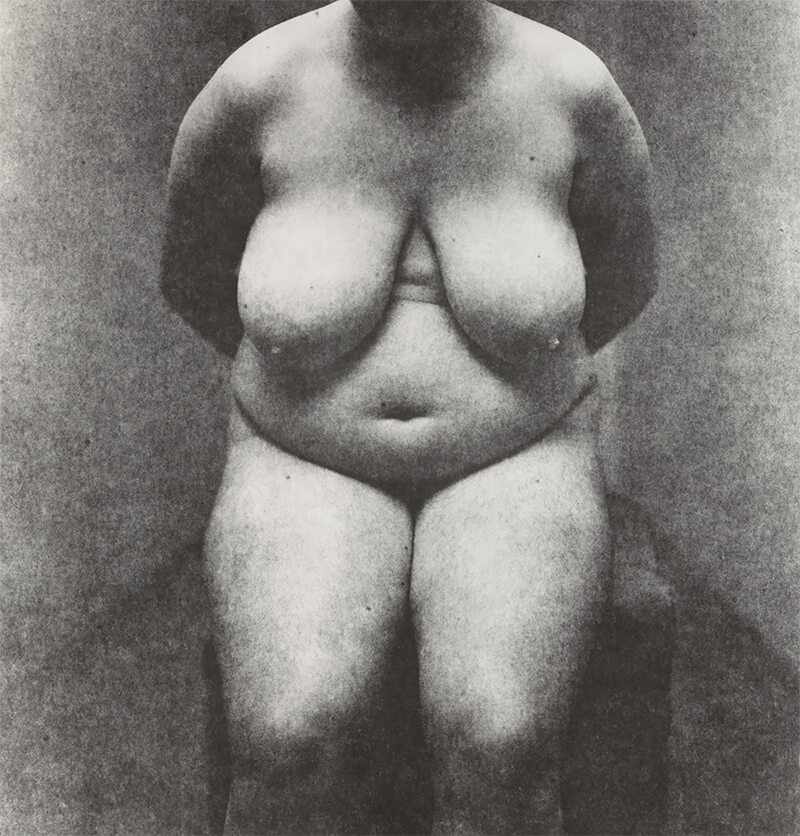
Nude N.1, New York, 1947 © Irving Penn
Source: The MET
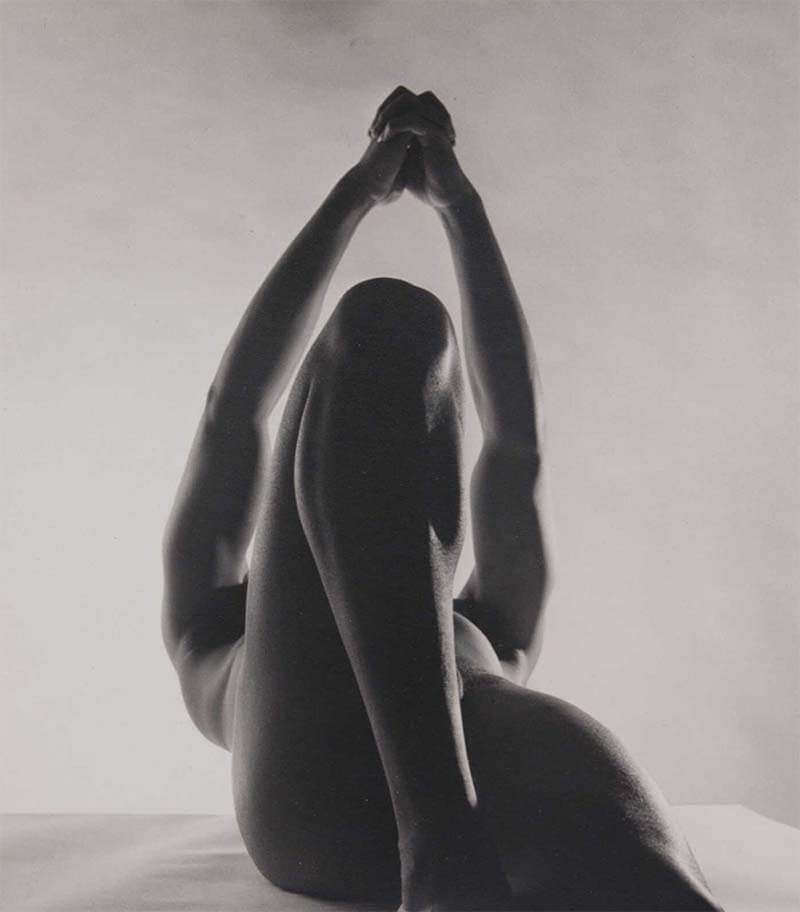
Male Nude I, 1952 © Horst P. Horst
Female artistic nudes also started to become more frequent in camera magazines (U.S Camera,
Popular Photography), where art was invoked to justify disrobing the female model. Nevertheless, if the public encouraged the making of female nudes, they still condemned them if they were not 'sufficiently artistic' according to their personal and subjective taste.
Created in 1953 and famous for its centerfolds of nude and semi-nude models, the magazine Playboy became very popular even if the featured images left very little place for photographic innovations.
It was only in the late 50s and early 60s that photography started to be recognized as a 'noble art'. Medias and advertisers, helped photographers gain recognition and open the doors of museums.
The Family of Man in 1955 (after 'Post-War European Photography' in 1953) was an ambitious photography exhibition curated by
Edward Steichen, the director of
MoMA's Department of Photography (Established in 1940). Hundreds of images by photographers toured the world for eight years to record-breaking audience numbers. But the exhibition was dedicated to humanists and documentary photographers.
Some photographers moved away from documentary realities and focused instead on the intrinsic qualities of photography.
Harry Callahan and Minor White, shared a sense of the kind of experience a photography can express. Their approach had as much to do with insight as with seeing, the metaphysical as well as the physical.
In a letter of 1946 Callahan wrote:
I have devoted every spare moment to (...) photography as a means of expressing my feelings and visual relationship to life within me and about me. Harry Callahan's work of the bodies of his wife Eleanor and daughter Barbara, identified domesticity as an aspect of the body itself and excluded all quotidian activities. He photographed his wife repeatedly, indoors and out, nude and clothed, for over 15 years.
Muses throughout his career, Callahan’s wife and daughter played, posed, and aged before his lens. With their attention to the physicality of light, however, Callahan’s photographs transcend mere family portraiture by calling attention to the simple beauty of life’s fleeting moments. ''He just liked to take the pictures of me,'' Eleanor recalled in her nineties. ''In every pose. Rain or shine. And whatever I was doing. If I was doing the dishes or if I was half asleep. And he knew that I never, never said no. I was always there for him. Because I knew that Harry would only do the right thing.'' Eleanor Callahan died in February 2012 at the age of ninety-five..
Source: MoMA
Minor White, (Minor White 1908-1976: born Minneapolis, MN: died Boston, MA: active Portand, OR, Rochester, NY) responded differently to decade's long 'acceptable sexual behavior' using his photographs to explore his sexuality while intentionally hiding his homosexuality. (His explicit sexual photographs of nude male bodies where not published until the 80s after his death.)
Nude Foot, San Francisco, March 23 1947, Gelatin silver print © Minor White
Courtesy The Minor White Archive, Princeton University Art Museum, bequest of Minor White (x1980-890) © Trustees of Princeton University
was a frequent contributor to the illustrated press including a portrait and fashion photographer for Harper's Bazaar, but in the postwar years, his work became increasingly abstract, as he experimented with a wide-angle lens and made Surrealist-inspired photographs of nudes outdoors. A former apprentice of Man Ray, he started nude photography as early as the 30s but because his images were rejected by the public and the press, it is only in the 60s that he was able to show them.
He created expressive photographs of nudes, shooting his subject matter at such close range that the human body took on the appearance of series of patterns and abstract designs.
Sample image by Bill Brandt, Nude, London 1954
Bill Brandt is best known for a series of nudes developed primarily between 1945 and 1961, that are both personal and universal, sensual and strange, collectively exemplifying the “sense of wonder” that is paramount in his photographs. Brandt's work is unpredictable not only in the range of his subjects but also in his printing style, which varied widely throughout his career.
Source: MoMA
Robert Rauschenberg and Susan Weil made experiments in parallel to the ascendancy of the Abstract Expressionist art movement, which started in New York in the late 1940s, in reaction against the horrors of the WWII. They placed their nude bodies on blueprint paper that were then exposed to the sun. Rather than represent their bodies, they left traces of being there (Blueprints 1949-1951) The works were featured in a 1951 article in
Life magazine.
Lucien Clergue has been exploring the artistic nude since 1957. Poetry and subtle eroticism are inseparable. He published his nudes alongside Paul Éluard's poems, in the book
Corps mémorables in 1957. From the beginning, he knows how to capture the most evocative sensuality. His models are lavish and he often liked to plunge them into the sea. But at the time he explained why we do not see the faces of the models. Because of censorship he wrote:
where there is hair there is no head and where there is a head there is no hair.
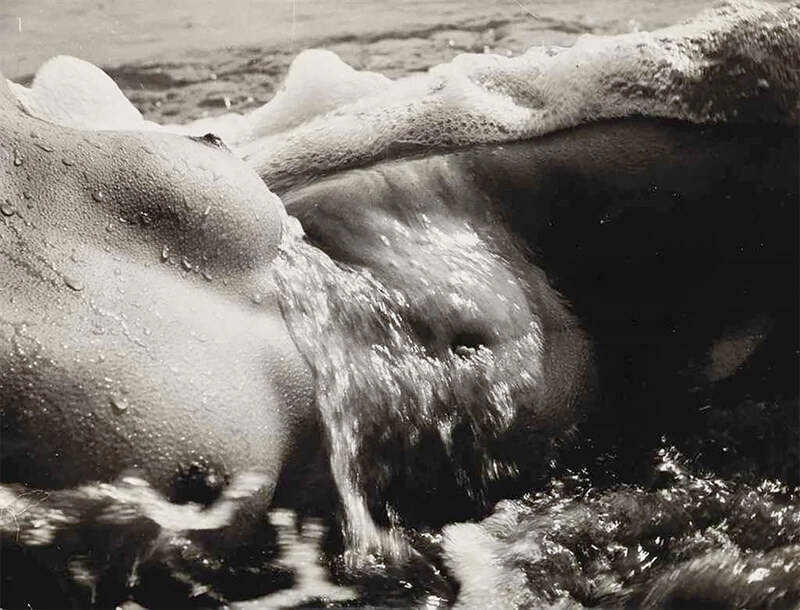
Nu de la Mer, Camargue 1956 © Lucien Clergue
Rock 'n' Roll, television, civil rights movements or the cold war were some of the major events that influenced artists at the time and a prelude to what was coming next..
All was conflict and argument in the 60s, there were tumultuous political uphills throughout the world. Nations supposedly at peace experienced considerable change. Young people rejected institutions by leading rebellions but also contributed to a consumerism burst. Celebrity and fashion photographers joined the glittering jet set of their subjects. Booming advertising became attractive for photographers.
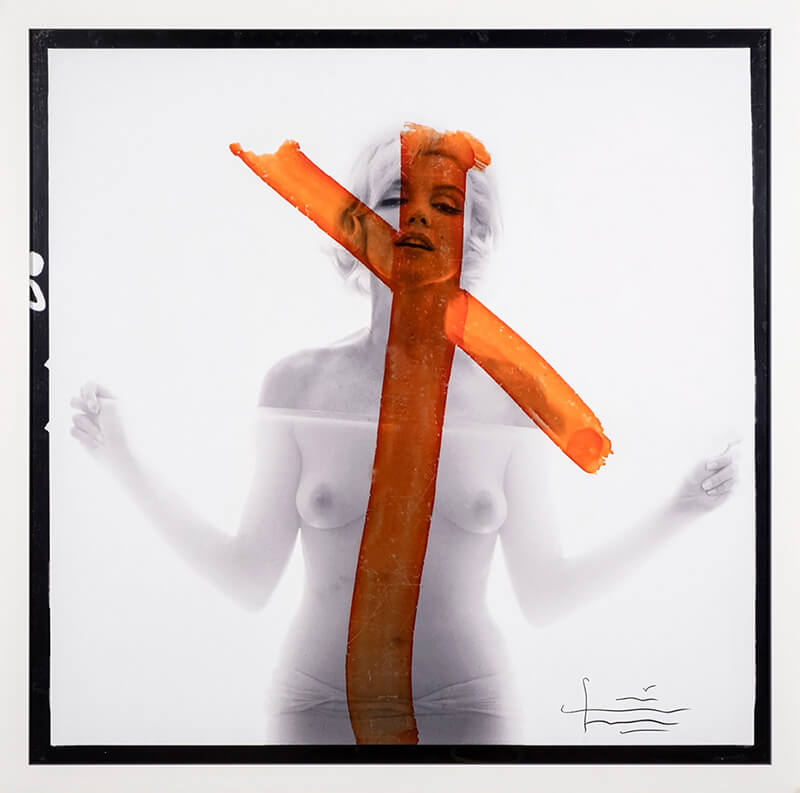
Marilyn Monroe behind a crucifix, from The Last Sitting for Vogue, 1962 © Bert Stern
The newly liberated social, political, and sexual climate that emerged, placed the body front and center. If life is the greatest form of art, then it seems only logic for artists to use the physical body as a medium. The body became a perfect tool to make the political personal. By sharp contrast to the repressiveness of the 50s, the body culture of the 60s produced an atmosphere of sexual freedom.
Low-priced 35mm and Instamatic cameras as well as the teaching of photography in universities, freed photographers, they were able to express themselves more easily as well as record the world around them.
The 1960s were an era when the term 'conceptual photography' was first born and began to be used. This process coincided with the early explorations into video art and Conceptual art during the Conceptual movement. In practice, artists began exploring conceptual photography as a means to stage an idea - rather than to shoot a subject and capture a moment.
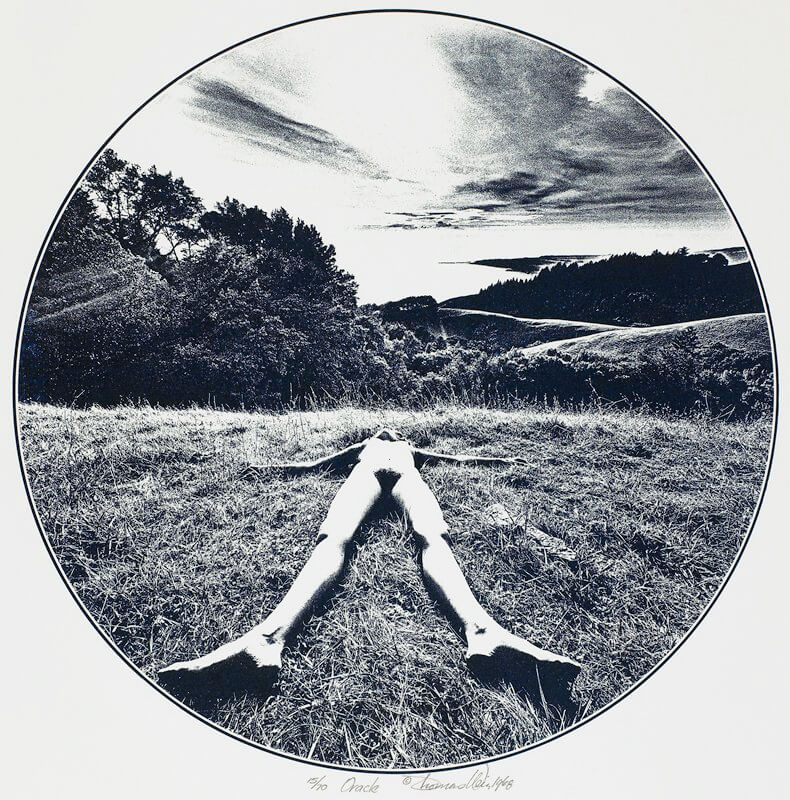
Renée Oracle 1968 © Thomas Weir
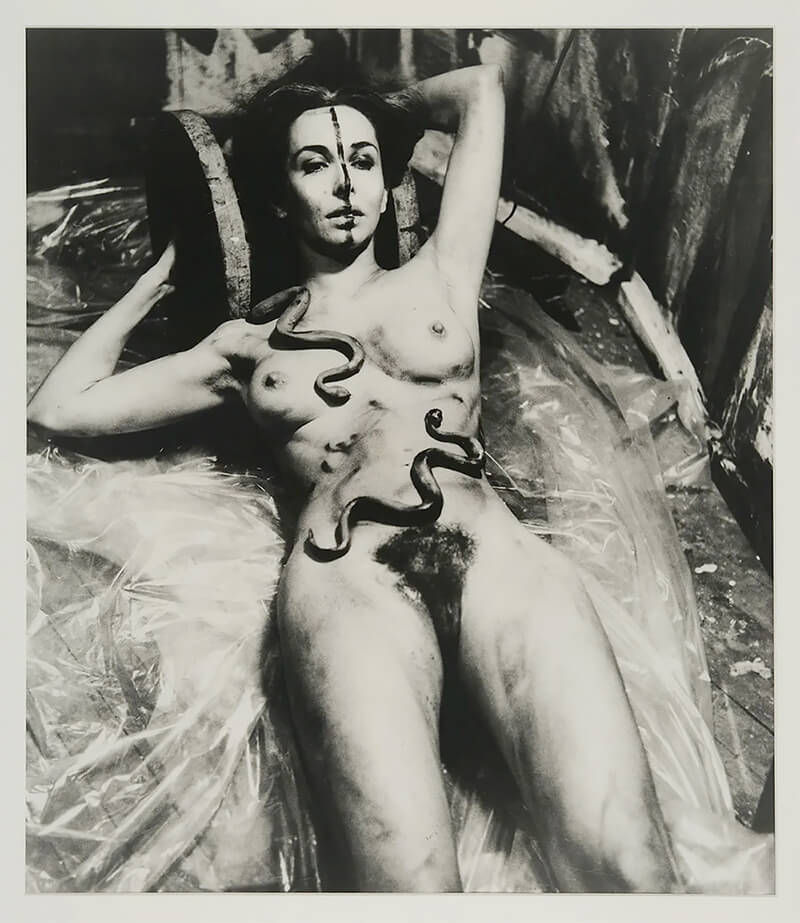
Eye Body: 36 Transformative Actions for Camera, 1963 (photo by Erró) © Carolee Schneemann
Source: dxi Magazine
In Japan,
Eikoh Hosoe is best known for his dark, high contrast, black and white photographs of male and female bodies. Some reference religion, philosophy and mythology, while others are nearly abstract, such as Man and Woman # 24, from 1960.
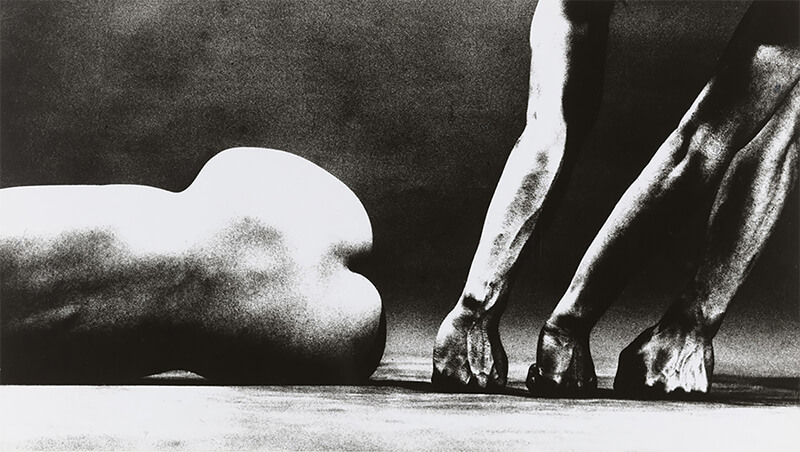
Man and Woman #24 1960 © Eikoh Hosoe
In combining graphic elegance with sensuality,
Ruth Bernhard achieved a delicate balance between compositional precision and evocative sensuality in reaction to trends in western culture that sought to exploit women's bodies in the 60s.
She told Margaretta K. Mitchell, author of
“Ruth Bernhard Between Art and Life” (2000):
Woman has been the subject of much that is sordid and cheap, especially in photography. (...) To raise, to elevate, to endorse with timeless reverence the image of woman has been my mission.
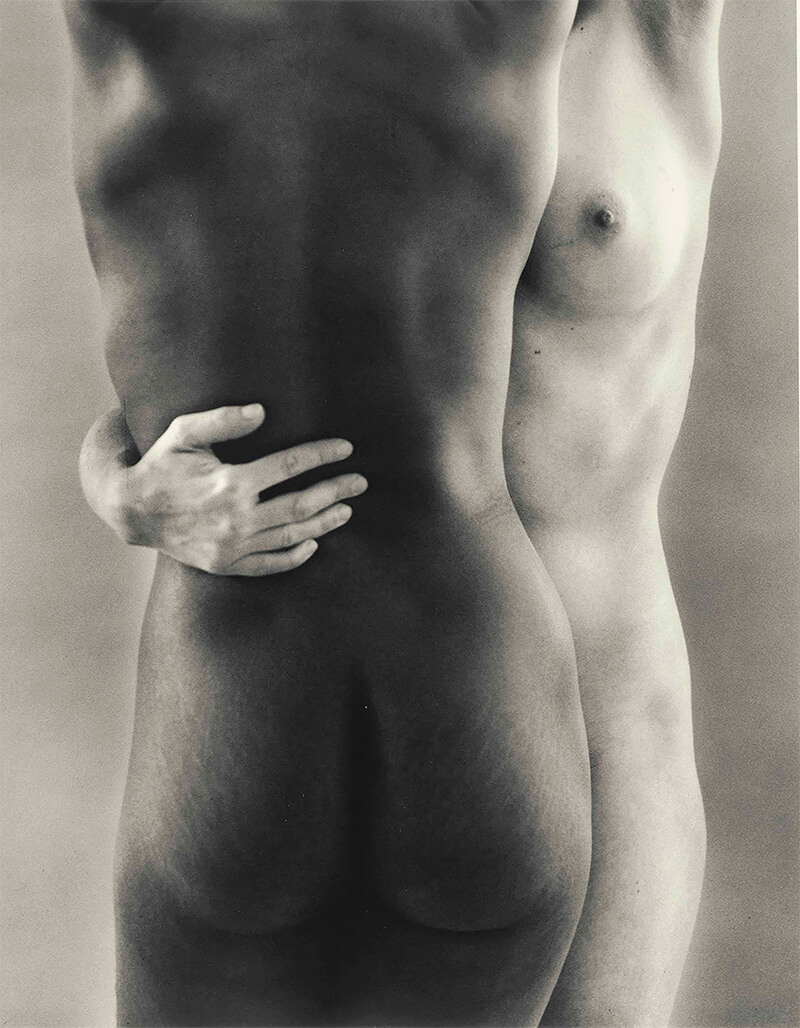
Two Forms, 1963 © Ruth Bernhard
The world changed dramatically in the 1960s and 1970s, it was the defining period of the modern age. It was also the moment when the medium flowered as a modern art form.
